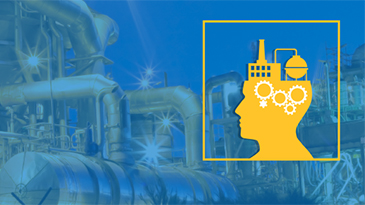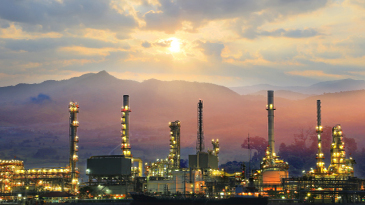I created the following dashboard about 15 years ago for a VP of refining to manage the operations at 8 refineries.1 It is a visual, easy-to-interpret chart of the principal key performance indicators (KPIs) that match any manufacturing facility.
The KPIs follow an arc of importance from top left to bottom right, measuring if the facility is:
1. Harming people?
2. Hurting the environment?
3. Breaking the law?
4. Assuring equipment is always on?
5. Using the minimum energy?
6. Producing the optimal quality and quantity of product?
This list may not be exhaustive. A manufacturer may have one or two other important KPIs (especially financial, such as return on capital expended (RoCE)). While vendors offer tools to implement hundreds of KPIs, for a manufacturing facility, less than one dozen represent the company’s most important strategic goals. Other measurements and metrics can track lower-level performance goals but they are not true KPIs.
So, what is operational excellence and where does it fit?
In this case, operational excellence is the functional sum of the six KPIs. I cannot tell you the precise algorithm to sum the six KPIs; that is a function of your business, company goals, leadership culture and so on.
What I can tell you is that functionally, the first three – safety, environment and compliance – must take priority to protect the business’ license to operate. If you do not fulfil the obligations therein, you do not get to operate. Manufacturers must then focus on optimizing the last three areas to meet their specific, overall performance goals for each category.
What are utilization and reliability?
I believe that the most important metric is utilization, because if equipment is not running it seriously diminishes all the other KPIs. What is utilization? It is a simple label for measuring an asset’s effective use and profitability, often loosely described as reliability and/or uptime.
Reliability is the most misunderstood piece. It is an asset’s ability to perform its full intended duty on demand. What is good reliability? A simple asset that fails weekly, flipping a breaker that needs to be reset, is not as reliable as it should be. The regular failure is annoying, but how important is it in the scheme of things? In contrast, a major compressor that fails once a year is more reliable, but the effects of downtime can be financially catastrophic.
Taking the foregoing into account, the most appropriate measure of utilization is availability to plan – is the asset usable when it is supposed to be? This is a function of mean-time-between-failure (MTBF), i.e., the frequency of failures and mean-time-to-repair (MTTR), the actual downtime related to the service and repair. Keep in mind that maintenance and repair can occur when the asset is not planned for production; a simple uptime measurement does not take this into account.
How do you improve utilization and reliability?
The maintenance analytics in Aspen Mtell® software intrinsically performs two functions to help manufacturers improve utilization and minimize unplanned downtime. First, Mtell provides far earlier warnings than other solutions for normal wear and tear that demands maintenance. Extra warning time allows for earlier and more thoughtful planning and preparation to minimize the disturbance and maximize uptime.
The extra time allows better responses. Responses may include planning and scheduling activities such as moving production to other units, increasing inventory levels to better withstand the outage, or selecting preferential feedstock to move production and reduce capacity requirements on the asset being serviced. Enabling such planning and scheduling activities may increase the high-value product available during the disturbance.
Second, Aspen Mtell is designed to seek out upstream (and sometimes downstream) process activity that can cause equipment degradation, damage and failure. Analyst firm ARC Advisory Group reports that such process-induced failures cause 82% of all breakdowns and are impossible to find using contemporary maintenance practices alone.
Process activity causing degradation include pump cavitation, liquid carry-over into compressors, operator errors, or lightning strikes causing power surges that affect equipment. All such events can run afoul of safety and design conditions for the equipment, often causing barely detectable damage that persists and builds for months, eventually causing catastrophic failure.
How maintenance analytics drives operational excellence
When Mtell detects such errant process activity, it sends a prescriptive warning to the operator advising changes to the process to remove the behavior: adjust throughput, increase cooling, etc. In this way the operator can stop the damage and maintain the integrity of the equipment. In some cases, facilities may be able to avoid failures and ensuing maintenance activity altogether.
Consequently, with its maintenance analytics, Mtell is the major contributor to the utilization KPI. It also strongly supports the total product output KPI – the area of operational analytics.






Leave A Comment